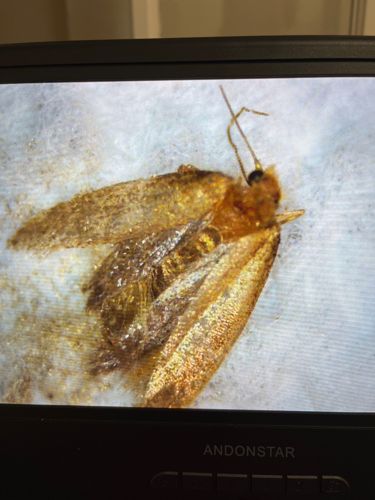Case-bearing Clothes Moth
Scientific Name: Tinea pellionella
Order & Family: Lepidoptera, Tineidae
Size: Wingspan typically 9-16 mm (0.35-0.63 in).

Natural Habitat
Indoors, preferring dark, undisturbed areas such as closets, attics, and storage chests, especially where natural fibers (wool, fur, silk, feathers) are present.
Diet & Feeding
Larvae feed on natural fibers of animal origin, including wool, fur, silk, felt, feathers, and sometimes synthetic blends. They can also feed on dried foods and other organic materials.
Behavior Patterns
Adult moths are weak fliers and prefer to crawl or make short flights. They are attracted to dark areas and are nocturnal. The larvae build a distinctive silken case that they carry everywhere, enlarging it as they grow. They are often found on or under infested materials. The entire life cycle can take between 2 to 6 months depending on conditions.
Risks & Benefits
Risk: Considered a significant household pest due to the damage their larvae cause to clothing, carpets, upholstery, and other items made of natural fibers. They do not bite or transmit diseases. Benefit: No known direct benefits to humans or the ecosystem, other than serving as a food source for some predatory insects or spiders.
Identified on: 9/21/2025